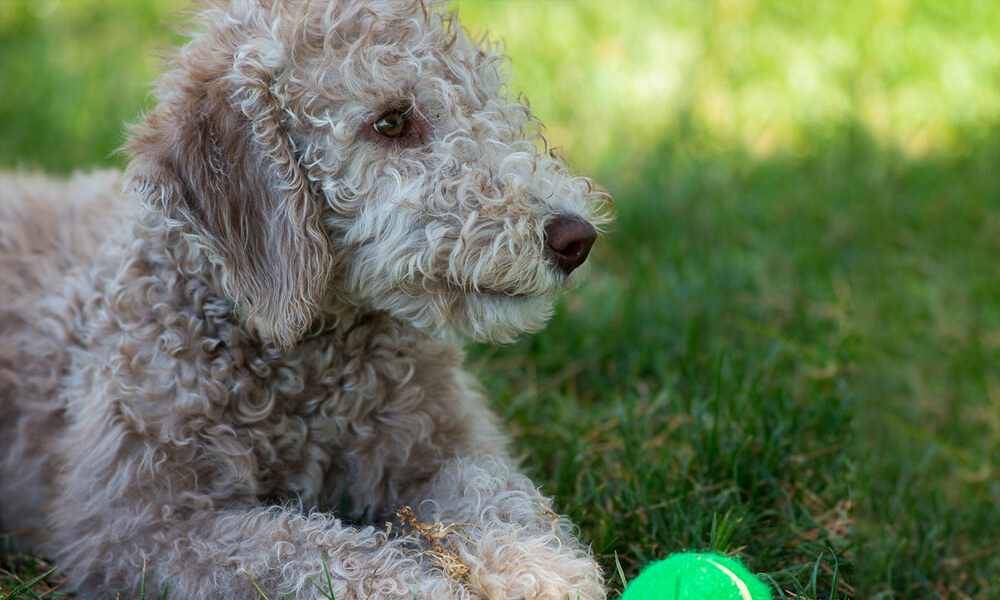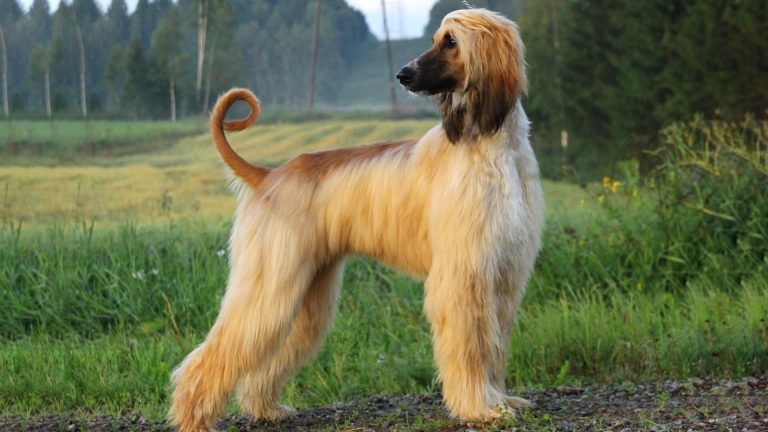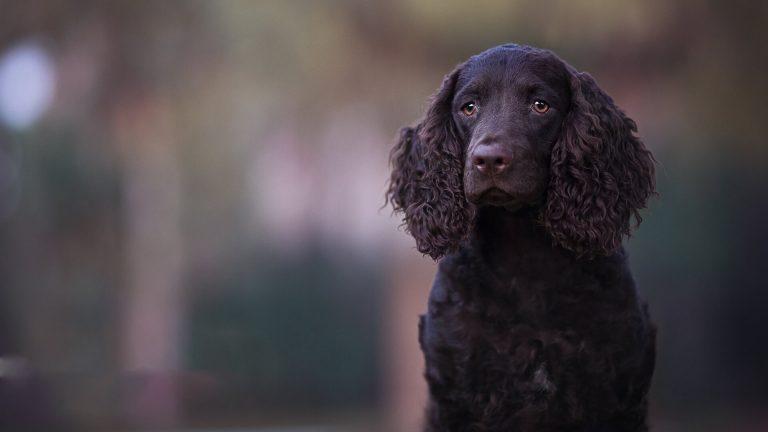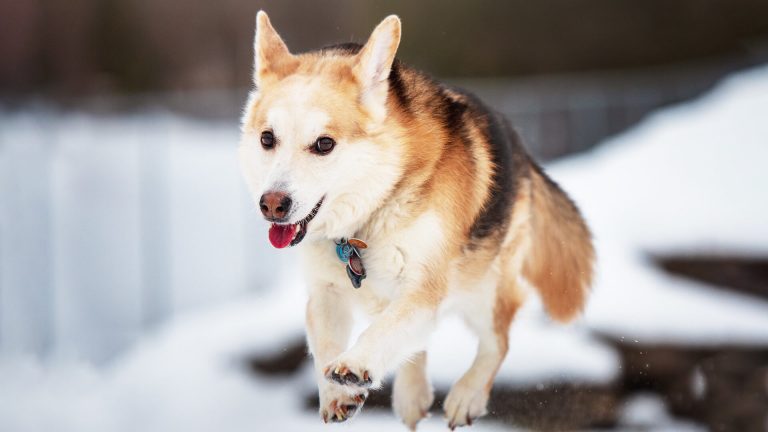The Bedlington terrier is a breed of small to medium-sized dog that originated in the town of Bedlington, Northumberland in Northeast England. It is thought that the breed was developed in the 19th century by coal miners who wanted a dog that was tough, agile, and able to hunt vermin. The breed is known for its distinctive appearance, with a lamb-like appearance and a curved back.
The Bedlington terrier was originally used for hunting small game, such as rabbits and rats, and for vermin control in mines and mills. It was also used for dog fighting, although this practice is now illegal in most countries. The breed was recognized by the American Kennel Club in 1886 and is now a popular companion dog.
Distinctive Features of Bedlington Terrier
| Breed Name | Bedlington Terrier |
| Lifespan | Up to 16 years |
| Size | Up to 17 inches at the shoulder |
| Weight | 17-23 pounds |
| Coat | Dense, curly, and woolly |
| Color | Various solid colors including blue, liver, and sandy |
| Health risk | Moderate |
| Unique trait | Lamb-like appearance with a distinctive pear-shaped head |
| Famous for | Originally bred for hunting and vermin control |
| Temperament | Gentle, affectionate, and intelligent |
| Maintenance | Moderate |
| Adaptability | Moderate |
| Behavior | Generally good, but supervision is recommended |
| Personality | Active, playful, and may have a moderate energy level |
| Social | Generally good with other dogs if properly socialized |
The Bedlington terrier is a small to medium-sized breed that is known for its distinctive appearance. It has a unique lamb-like appearance, with a narrow head, small V-shaped ears, and a curved back. The breed has a soft, wavy coat that is usually blue, liver, or sandy in color.
The Bedlington terrier has a lifespan of around 12 to 16 years. It is a small to medium-sized breed, with males typically weighing between 17 and 23 pounds and females weighing between 16 and 22 pounds. The breed is generally between 15 and 17 inches tall at the shoulder.
Bedlington terriers are known for their intelligence, energy, and playfulness. They are generally good with children and other pets, but they can be reserved with strangers and may be prone to barking. They are generally easy to train, but they can be stubborn at times. It is important to socialize and train them from a young age to prevent behavioral problems. Bedlington terriers require regular grooming to keep their coat in good condition. They are generally healthy, but like all breeds, they can be prone to certain health conditions, such as hip dysplasia and liver disease.


How to Take Care of Pet Bedlington Terrier?
As a proud owner of a Bedlington Terrier, you can expect a loyal and affectionate companion who loves to be a part of your family. Their curly and soft coat requires regular grooming and maintenance to keep them looking their best. Be prepared to provide plenty of mental and physical stimulation to keep them happy and well-behaved.
Caring for a Bedlington Terrier involves several aspects to ensure their well-being:
How to Set Up a Habitat for a Pet Bedlington Terrier?
Bedlington terriers are generally active and energetic dogs that need plenty of exercise and mental stimulation. They do well in a variety of living situations, including apartments and houses with yards, as long as they receive adequate exercise and attention.
Here are some tips for setting up a habitat for a Bedlington terrier:
- Provide a comfortable, safe place for your dog to sleep and rest. This can be a crate or a bed in a designated area of your home.
- Make sure your dog has access to fresh water at all times.
- Provide your dog with a high-quality diet that meets its nutritional needs.
- Make sure your dog has access to a secure, fenced-in yard or an area where it can safely play and exercise.
- Provide your dog with toys and other forms of mental stimulation to keep it entertained and engaged.
- Make sure your dog has access to shelter from the elements, such as a dog house or a covered area.
- Regularly groom your dog to keep its coat and skin healthy.
- Take your dog to the veterinarian regularly for check-ups and to address any health concerns.
What to Feed Your Pet Bedlington Terrier?
It is important to feed your Bedlington terrier a high-quality diet that meets its nutritional needs. The specific nutritional requirements of your dog will depend on its age, size, and activity level. In general, Bedlington terriers should be fed a diet that is rich in protein, moderate in fat, and low in carbohydrates.
Here are some things to consider when choosing a food for your Bedlington terrier:
- Choose a food that is formulated for small to medium-sized breeds.
- Look for a food that is made with high-quality protein sources, such as meat, poultry, or fish.
- Avoid foods that contain low-quality or filler ingredients, such as corn, wheat, and soy.
- Consider feeding your dog a grain-free or limited-ingredient diet if it has food sensitivities or allergies.
- Choose a food that is appropriate for your dog's life stage (puppy, adult, or senior).
- Consult with your veterinarian or a professional nutritionist if you have questions about your dog's nutritional needs.
In addition to a high-quality diet, it is important to provide your Bedlington terrier with access to fresh water at all times. You should also monitor your dog's food intake and body weight to ensure it is getting the right amount of food for its size and activity level.
What to Avoid Feeding Your Pet Bedlington Terrier?
There are a number of human foods that should be avoided when feeding your Bedlington terrier. These foods can be toxic or harmful to dogs and can cause serious health problems. Here are a few examples of foods that you should avoid feeding your Bedlington terrier:
- Chocolate contains theobromine, which is toxic to dogs and can cause symptoms such as vomiting, diarrhea, tremors, and seizures.
- Grapes and raisins can cause kidney failure in dogs.
- Onions and garlic can cause anemia in dogs due to their high levels of thiosulfate.
- Macadamia nuts can cause tremors, hyperthermia, and other symptoms in dogs.
- Alcohol can be toxic to dogs and can cause symptoms such as vomiting, diarrhea, difficulty breathing, and even coma or death.
- Cooked bones can splinter and cause blockages or tears in a dog's digestive system.
- Lime is not recommended for Bedlington Terriers as it can irritate their skin and cause discomfort. It's best to avoid using lime around them.
- Avocados should be avoided for Bedlington Terriers as they contain Persin, which can be toxic to dogs and may cause digestive upset, breathing difficulties, and other health problems.
Only feed your Bedlington terrier dog food and treats that are specifically formulated for dogs. If you are in doubt about whether a particular food is safe for your dog, it is best to consult with your veterinarian.
Brushing, Bathing & Grooming Needs of Pet Bedlington Terrier
Bedlington terriers have a soft, wavy coat that requires regular grooming to keep it in good condition. Here are some tips for caring for your Bedlington terrier's coat:
- Brush your dog's coat regularly to remove tangles and mats. Use a slicker brush or a comb specifically designed for wavy coats.
- Bathe your dog every four to six weeks, or as needed. Use a high-quality dog shampoo and conditioner to help keep your dog's coat soft and shiny.
- Trim your dog's nails every few weeks to prevent them from getting too long.
- Check your dog's ears regularly for any signs of infection, such as redness, swelling, or discharge. Clean your dog's ears as needed to prevent ear infections.
- Brush your dog's teeth regularly to prevent dental problems.
Health Concerns of Pet Bedlington Terrier
Like all breeds, Bedlington terriers can be prone to certain health concerns. It is important to be aware of these potential health issues and to work with your veterinarian to address any concerns as soon as possible.
Some health concerns that are commonly seen in Bedlington terriers include:
- Hip dysplasia: Hip dysplasia is a genetic condition affecting the hip joint, causing pain and difficulty walking.
- Patellar luxation: is when the kneecap dislocates, causing walking difficulties and discomfort.
- Allergies: Bedlington terriers may develop allergies to certain foods or environmental allergens.
- Hypothyroidism: Hypothyroidism is a condition where the thyroid gland doesn't produce enough hormones, leading to symptoms like weight gain, hair loss, and fatigue.
- Retinal dysplasia: Retinal dysplasia can be mild (retinal folds) or severe (retinal detachment).
- Cataracts: Cataracts can develop early or later in life, affecting vision, potentially leading to blindness.
- Entropion: Entropion, common in Bedlington Terriers, is when the eyelids turn inward, causing eye discomfort and damage.
- Glaucoma: Bedlington Terriers are prone to glaucoma, an eye condition with increased eye pressure.
- Progressive retinal atrophy (PRA): Progressive retinal atrophy (PRA) leads to gradual vision loss and is common in Bedlington Terriers.
- Copper toxicosis: Copper toxicosis is a genetic condition impairing copper metabolism, leading to liver damage and other health issues.
- Von Willebrand's Disease: Von Willebrand's Disease causes impaired blood clotting due to a lack of a specific protein.
- Elbow dysplasia: Elbow dysplasia leads to lameness in the forelimbs due to skeletal growth abnormalities.
- Distichiasis: Distichiasis is the abnormal growth of eyelashes, causing irritation as they grow into the eye.
Work with your veterinarian to monitor your Bedlington terrier for any signs of these or other health problems, and to take appropriate steps to address any issues that arise. Regular check-ups, a healthy diet, and regular exercise can help your Bedlington terrier stay healthy and happy.
Training and Playing with Pet Bedlington Terrier
Bedlington terriers are intelligent, energetic, and playful dogs that require regular training and mental stimulation. Here are some tips for training and playing with your Bedlington terrier:
- Start training your dog as soon as you bring it home, and make sure to use positive reinforcement techniques such as rewards and praise.
- Enroll in a training class with a professional instructor to learn the best techniques for training your Bedlington terrier.
- Provide your dog with plenty of mental stimulation by offering interactive toys and games, such as puzzle toys and hide-and-seek games.
- Take your dog for regular walks and runs to provide physical exercise and mental stimulation.
- Consider enrolling your dog in activities such as obedience or agility training to challenge it mentally and physically.
- Make sure to set boundaries and establish rules for your dog to follow but be consistent and fair in your training.
Other Pets to Keep or Avoid with Bedlington Terrier
Bedlington terriers are generally good with other pets and can get along well with other dogs and animals. However, it is important to properly introduce any new pets to your Bedlington terrier to ensure that they get along and can coexist peacefully.
Here are some things to consider when introducing a new pet to your Bedlington terrier:
- Introduce the pets in a neutral location, such as a park, to minimize any territorial behavior.
- Supervise their interactions and keep a close eye on their body language to ensure that they are getting along.
- Gradually increase the amount of time they spend together to allow them to get used to each other.
- Provide plenty of positive reinforcement and rewards for good behavior.
- Consult with a professional trainer or behaviorist if you have any concerns or if the pets are not getting along.
Facts About Bedlington terrier
Here are some interesting facts about the Bedlington terrier:
- The Bedlington terrier is a small to medium-sized breed that originated in the town of Bedlington, Northumberland in Northeast England.
- The breed is known for its distinctive lamb-like appearance, with a narrow head, small V-shaped ears, and a curved back.
- The breed was developed in the 19th century by coal miners who wanted a tough, agile dog that could hunt vermin.
- Bedlington terriers were originally used for hunting small game, such as rabbits and rats, and for vermin control in mines and mills. They were also used for dog fighting, although this practice is now illegal in most countries.
- Bedlington terriers are known for their intelligence, energy, and playfulness. They are generally good with children and other pets, but they can be reserved with strangers and may be prone to barking.
- The Bedlington terrier was recognized by the American Kennel Club in 1886 and is now a popular companion dog.
What It's Like to Keep a Bedlington Terrier as a Pet?
Bedlington terriers are intelligent, energetic, and playful dogs that can make great companion pets. They are generally good with children and other pets, but they can be reserved with strangers and may be prone to barking.
Bedlington terriers require regular exercise and mental stimulation to stay happy and healthy. They do well in a variety of living situations, including apartments and houses with yards, as long as they receive adequate exercise and attention. They are generally easy to train, but they can be stubborn at times, so it is important to be patient and consistent in your training approach.
Bedlington terriers have a soft, wavy coat that requires regular grooming to keep it in good condition. They should be brushed regularly, bathed every four to six weeks, and have their nails trimmed every few weeks. It is also important to check their ears regularly for any signs of infection and to brush their teeth regularly to prevent dental problems.
Frequently Asked Questions About Bedlington Terrier
Here are answers to some frequently asked questions about Bedlington terriers:
What is the lifespan of a Bedlington terrier?
Bedlington terriers have a lifespan of around 12 to 16 years.
How big do Bedlington terriers get?
Bedlington terriers are a small to medium-sized breed. Males typically weigh between 17 and 23 pounds and females weigh between 16 and 22 pounds. The breed is generally between 15 and 17 inches tall at the shoulder.
How much exercise do Bedlington terriers need?
Bedlington terriers are active and energetic dogs that require regular exercise to stay healthy and happy. They should be taken for at least one daily walk or run and given the opportunity to play and run around in a fenced-in yard or other secure area.
Are Bedlington terriers good with children?
Bedlington terriers are generally good with children and can make great family pets. However, it is important to teach children to respect and be gentle with all animals and to always supervise their interactions.
Do Bedlington terriers shed?
Bedlington terriers have a soft, wavy coat that does shed, but not excessively. They may shed more during certain times of the year, such as during the spring and fall.
Are Bedlington terriers prone to any health problems?
Like all breeds, Bedlington terriers can be prone to certain health problems. Some health concerns that are commonly seen in Bedlington terriers include hip dysplasia, liver disease, patellar luxation, eye problems, allergies, and hypothyroidism. It is important to work with your veterinarian to monitor your dog for any signs of these or other health problems and to take appropriate steps to address any issues that arise.







